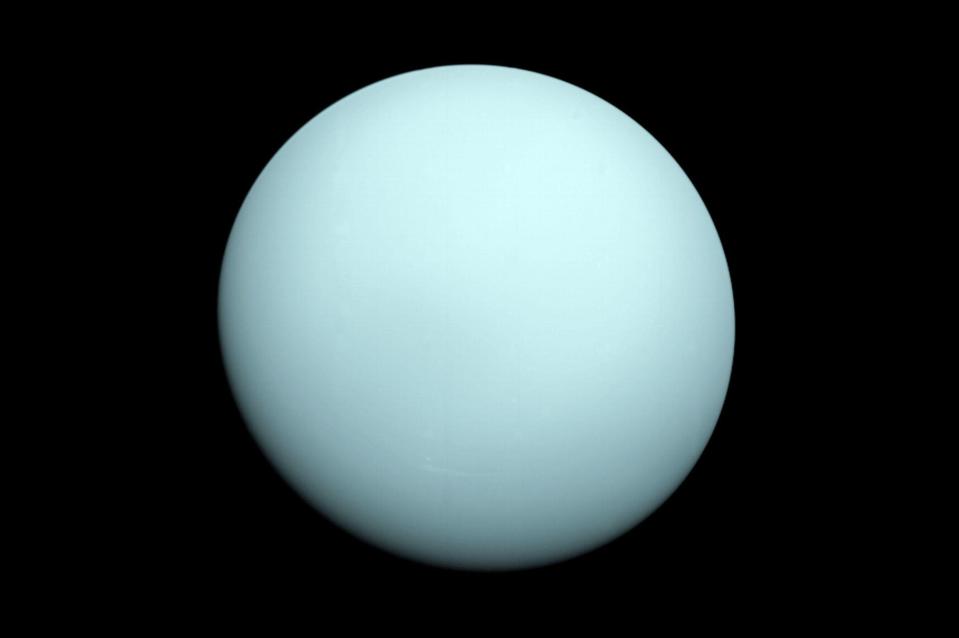You'll Be Able to See Uranus at Its Brightest Tonight — Here's How
The planet may even be spotted without binoculars.

JPL-Caltech/Courtesy of NASA
An image of the planet Uranus taken by the spacecraft Voyager 2 in 1986.Monday night, ice giant Uranus will reach opposition, making it appear brighter, larger, and more visible than usual. Opposition, when Earth lies between a planet and the sun, presents the best time to view our space neighbors.
Uranus will officially reach opposition around midday — roughly noon EST — on Nov. 13, but you can enjoy its vivid glow after sunset and through the night, according to EarthSky.org.
Here’s how to see Uranus at opposition this month, including where to look and how to watch it.
How Can I See Uranus?
Uranus is technically visible to the naked eye, but spotting it does require a dark sky with minimal light pollution, such as a national park.
Point your eyes to the east after sunset on Monday. It will be visible after sunset then through the night, floating between Jupiter and the star cluster Pleiades, according to The Old Farmer’s Almanac. After its moment in the spotlight, Uranus will remain visible, albeit dimmer, in the evening sky until April 2024.
Do I Need Binoculars to See Uranus?
While you can spot Uranus without equipment in dark-sky locations, stargazing binoculars or a telescope will enhance your view. The planet appears as a greenish-blue disk, according to EarthSky.org. Unlike the twinkling stars, Uranus produces a steady light.
Get to Know Uranus
Head into your night of Uranus viewing with some background on the planet. Some of our favorite facts? Uranus, the seventh planet from the sun, is known for hostile, cold, and windy conditions, according to NASA. Some 13 rings surround the ice giant, as do 27 small moons.
Its extreme conditions make life as we understand it unlikely. Case in point: NASA says the planet doesn’t technically have a surface; instead, it’s a collection of “swirling fluids."
For more Travel & Leisure news, make sure to sign up for our newsletter!
Read the original article on Travel & Leisure.

